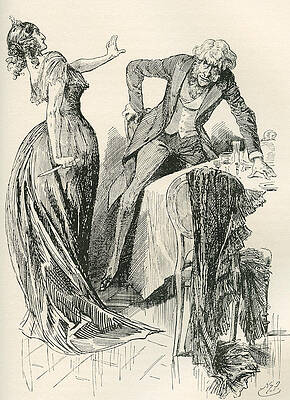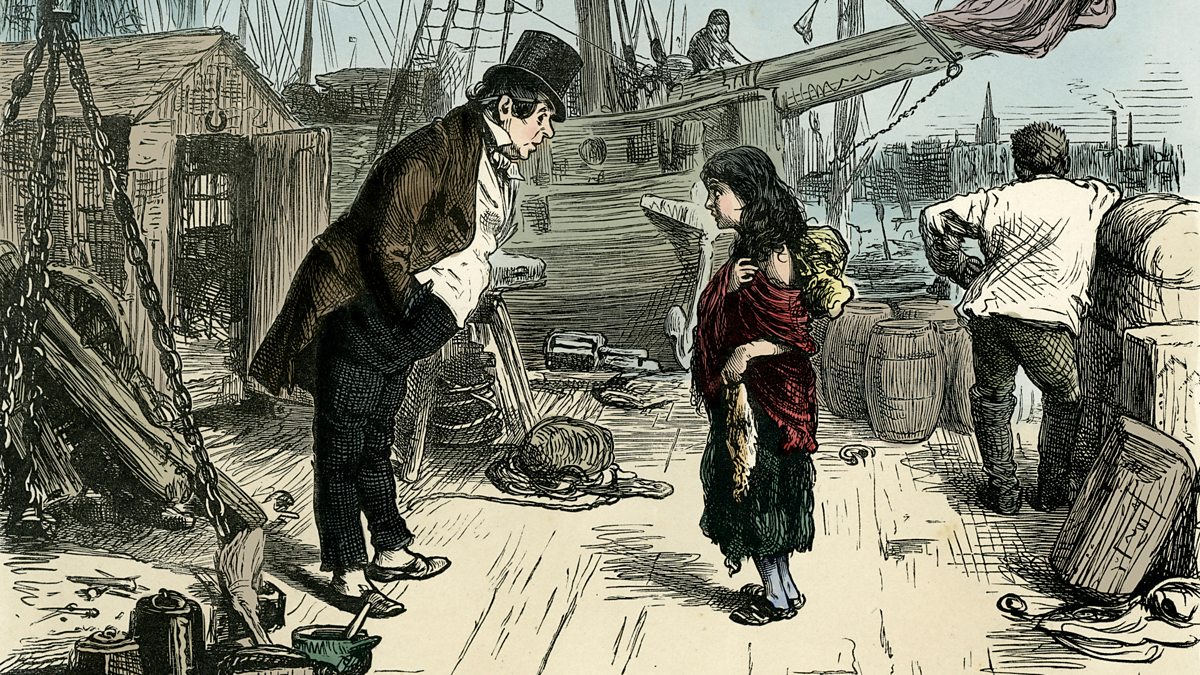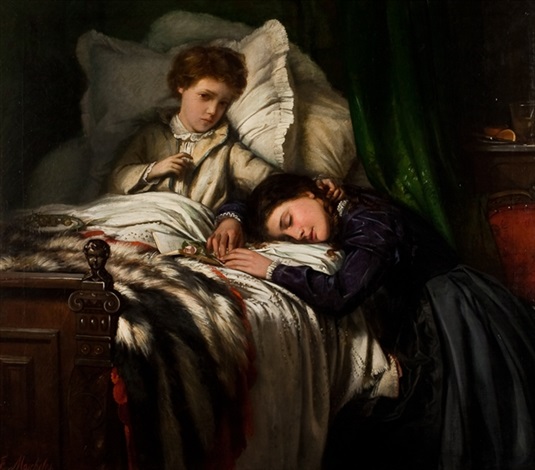“There are forms of oppression and domination which become invisible – the new normal.” -Michel Foucault
The Victorian era of England was widely known to be the period of vast industrial developments, chaotic familial conditions, economically downtrodden situations, religious skepticism as well as fanaticism, utterly patriarchal social systems, up-scaling scientific inventions, innovations and subtly immoral lifestyles. The commotions and social unrest had inspired a significant number of contemporary men and women to respond over the unhealthy environment. George Eliot, Charlotte Bronte, Alfred Lord Tennyson, Robert Browning, Elizabeth Barrett Browning, John Ruskin, Thomas Carlyle, W. M. Thackeray, Elizabeth Gaskell, Matthew Arnold and many other renowned writers had contributed to the social upheavals of Victorian age, among them bloomed another noteworthy novelist in the Victorian soil, Charles Dickens, who voiced out the innate emotions and anguish of the common public in his writings.

The mood of the fictions of Dickens was highly collective in every sense. He had never been silent towards the burning issues and traumas of day-to-day life. The very opening lines of ‘A Tale of Two Cities’ could sum up the entire uproars of the Victorian era, “It was the best of times, it was the worst of times, it was the age of wisdom, it was the age of foolishness, it was the epoch of belief, it was the epoch of incredulity, it was the season of light, it was the season of darkness, it was the spring of hope, it was the winter of despair” (1). Most of the novels of Dickens bore autobiographical overtones. He possessed a peculiar eye for the sufferings and pains of his fellowmen. Not only his ideals and social consciousness begot him numerous readers, but also his narrative techniques, spontaneity and his diction that had favored him undoubtedly.
According to Aristotelian doctrines, Rhetoric can be classified into three dimensions, namely, ‘Logos, Ethos and Pathos’ which the writers incorporate as the modes of persuasion in their writings. The narratives which employ logic and reason are known as Logos Rhetoric, as in the case of Harper Lee’s To Kill a Mockingbird. The set of narratives which prominently depends upon the ethical arguments are Ethos Rhetoric. Nathaniel Hawthorn’s The Scarlet Letter can be considered as an Ethos Rhetoric. The narratives which carry emotional appeal and possess the capacity to arouse sympathy and pity are categorized as Pathos Rhetoric, according to Aristotle. The rhetoric technique of the novels of Charles Dickens mostly falls under this type. His Dombey and Son couldn’t be a deviation from his usual choice of narrative techniques.

In order to evoke pathos in the minds of the readers in his novels, Dickens elucidated the degrading nature of human life in all spears. Dombey and Son plays on the distillation and degeneration of moral values which in terms called as ‘Victorian Morality’. The moral climate of the era was in deluge. The marital disharmony occurred in the lives of Dombey and his beloved young wife Edith, her elopement with Carker- one year after her marriage with Dombey, the dishonor and shame that had fallen upon the fame of Dombey were quite common in the lives of the Victorian men and women. Their religious faith was delineating. Their moral behaviors were worsened and were out of question.
Human lives were at stake as nothing was stable and firm in the society. Families were collapsed, children were orphaned with no proper food and shelter, young women were coerced to many old men just for the sake of money. Everything in the society was entirely unhealthy. The ‘Power Struggle’ between genders and between classes transformed the living to be more difficult and impossible. The emptiness and vagueness of human life and the pathetic condition of women in Victorian age is well presented in the words of Somerset Maugham as, “Poor Miss Porchester. She had sacrificed herself in the altar of Victorian Morality, and I am afraid the consciousness that she had behaved beautifully was the only benefit she got from it.” (5)

Power transition of men is presented as a vital thread that correlates the traumas of the prominent characters of the novel. Dombey was a snobbish father who gave preferences only to his male child Paul and ignored his daughter Florence, thoroughly from his realm, ‘for not an orphan in the wide world can be so deserted as the child who is an outcast from a living parent’s love.’ Dombey owned a shipping firm named ‘Dombey and Son’ and badly aspired his son to take over his business after him. He was ruthless and ridiculously stern towards his daughter, only because he firmly believed that a girl child could never inherit his business. Florence was deprived of the filial love, still she tried her best to attain her father’s love by reciprocating warmth and love for his harsh and rude attitude towards her.
The title of the novel and the name of the firm are both same and similarly patriarchal. Dickens wanted to convey the pitiful condition of Victorian women to his readers that there is no room for woman even in the title of the book and/or the name of the company, as he tried to portray the real picture of the society in his writings. It denotes, how inheriting the family possessions was literally denied for women. Similar conditions prevail even after the women owned the right to inherit the family possessions by law, till date, even in India as it is on the face of entire earth, the names of the firms, companies and businesses are ‘So and so and Sons’, ‘So and so and Brothers’, not daughters or sisters, not sons and daughters or brothers and sisters.

Britain was fast developing during the times of Dickens. Businesses of the creamy layer of the society, related to railways, industrial machinery, shipping equipment were scaling new heights. On the other hand, the daily wages and industrial laborers were struggling for their daily bread. They had to work for almost eighteen to twenty hours a day in order to feed at least one time meal of a day, for their family. Child laborers were provided with porridge of poor quality at labor houses which led to malnutrition and declining health of child population. The laborers who worked in railways were uncertain about their life which was more exposed to death as the trains derailed often. The passengers felt equally unsafe to travel in the railways as of the laborers in the sector. Dombey and Son explores this ‘Rail road mania syndrome’ of Victorian era, incorporating the autobiographical incidents of Dickens himself.
Dickens lost the manuscripts of his novel, Our Mutual Friend while traveling in train with his friend Ellen Turner and her mother, due to the train’s derailment. Dickens fortunately escaped without any injury but his friend and her mother were vitally injured and wounded. Moreover, many friends of Dickens invested in railway shares and lost even their livelihood. They happened to stoop to the state of paupers overnight. Dickens could draw the connections between men being drunkard and ending up in bankruptcy with those men who invested in railway shares and ended up in a similar way.

This sudden economical loss of men had affected Dickens very personally as his father happened to be in such a state of bankruptcy due to alcohol addiction. Hence, Dickens determined to record the transient nature of scientific advancements in his writings. In Dombey and Son, he questions the invalidity of modern inventions and discoveries. He recommends his readers to ponder over, how far human lives are safe in the hands of such developments and advancements. Man invent things only at the cost of the lives of other men, women and children. The credibility of those inventions and discoveries are measured by the scale of incredible human lives. Dickens puts forth the idea of such inventions that are for or against the human kind and induces his readers towards reverse thinking.
Dickens had never popped up with the traces of ‘Negative Capability’ in his writings. He would scarcely lament over the problems again and again and remained submerged in them beyond recovery. He was highly rational and sensible in dealing with problems. He was ‘verisimilitude’ in his presentations, he depended mainly upon his first hand experiences. Dombey was out and out arrogant and merciless throughout the novel. Dickens intended to portray the milieu of the era through his character. He observed his people with a keen insight and precise perception. He described their real faces through his characters in the novel. His treatment towards his daughter was a template of Victorian carelessness in bringing up a child and parenting a child in abnormal ways.

Dickens had incorporated certain generic stereotypes of the Victorian period which allows the readers to assimilate the very mood and texture of the period. Regarding the concepts of love, the Victorian fictions followed a typical ideal. The novelists of the age attached sublimity only to a sort of love which would end successful only after long struggles. As in Jane Eyre or Great Expectations, the protagonists of Dombey and Son, Florence and Walter happened to be united after long struggles. To Florence, Walter ensured a secure feel which she actually expected from her father. But it didn’t last long when he was deputed overseas where his ship wrecked and he was believed to be drowned in the ocean. Only in the later part of the novel, he shows up again, married and settled down at last with Florence.
This love sequence is quite common in most of the Victorian novels. Missing the loved ones and finding them again accidentally were part and parcel of Victorian life. As British government had to manage many of its overseas empires and many rich men of the society had run their lucrative import and export business abroad in British colonies, it was eventual that they would employ their men to navigate their goods to other foreign countries. Voyages were their everyday business. Ships wrecked and men went missing increasingly day by day. Family members of the missing sailors had only two options, either they must believe that they would come back home someday or they would never.

Dombey and Son also highlights the unhealthy and rigid atmosphere of boarding schools in Victorian England which led to the worsened health conditions and at the end, death of Paul. He was longing for his mother’s love who was immediately dead after his birth. His sister was separated from him by his father as she wasn’t supposed to be closely associated with him as she belonged to the least preferred gender of the society. Such conditions dragged the mental and physical health of Paul to a malicious state which later stood as the main cause of his death. The patriarchal system of the society directly affects women and indirectly affects men in every manner and matter. The restrictions that are imposed upon women affects the lives of male gender to all possible ways.
Though Dickens had attempted in Dombey and Son, to communicate the prevailing social conditions of his times with his readers, his consciousness had compelled him to load the novel with multiple ideas which had turned the narrative more clumsy and incompatible. The novel was deemed as a rhetorical failure as Dickens had tried using ‘Victorian Morality’ to showcase social morality. Hence, the novel remains capable of seeking special attention in the literary arena for a good reason, it focuses on both the base and super structure of the society. People who possess money and riches will create rules; People who don’t possess it will oppose it. The conflict between these two sections of the society is eternal and never ending which secures a remarkable place for Dombey and Son even after centuries.

Works Cited:
- Aristotle. The Art of Rhetoric. Harper Collins Publishers, London. 2014.
- Dickens, Charles. A Tale of Two Cities. Chapman & Hall Ltd, London. 1870.
- Dickens, Charles. Dombey and Son. Cambridge University Press, New York. 1872.
- Foucault, Michel. Discipline and Punish: The Birth of the Prison. Penguin Publishers, London. 2019.
- Maugham, Somerset. Short Stories. Vintage Books, London. 1998.

1 comment
Excellent review of Charles Dicken’s work “Dombey and Son”, driving home the patriarchial society of Victorian times.
Lovely and crisp.
Thanks
Comments are closed.